Waltzing the city of Dharamshala
- Prayer wheels at Gyuto Monastery, dharamshala
- St John’s Church in the wilderness
- Butter lamps at Dharamshala Monastery Prayer Room
- Tibetan handicrafts at the kotwali bazaar at dharamshala
- Mcllo Restaurant at Dharamshala
- Dhauladhar Range from Dharamshala
- Monastery at Dharamshala
- Local women enjoying the Bhagsu Nag Falls
- Prayer Flags at the Dharamshala Monastery
On my two and half hour journey from Pathankot to Mcleodganj, the taxi driver regaled me with the interesting history of our destination, Dharamshala. The road, beautifully bordered with coniferous trees and cantonment area, kept me company.
I had boarded the train from Delhi to Pathankot, the day before. From Pathankot, I planned to transfer by taxi, to my desired destination. One can also avail the volvo bus services available from the ISBT Bus terminal in Delhi up to the Dharamshala Bus terminal. However, I found that travelling by an overnight train, was comfortable and economical.
Dharamshala, a small yet significant hill station, cradled in the Kangra Valley, is set amidst the Dhauladhar Himalayan range. The area became a popular hill station for the British, in the pre-independence era, offering them respite from the tropical summer heat. However, since 1960, it has become the ‘Tibet in Exile’, a home to His Holiness the Dalai Lama, the place is a pilgrim centre for Buddhists and Tibetan culture.
Around July-August, the sun is shrouded by heavy clouds, and seems to be merely peeking every now and then. It is advisable to carry an umbrella around this time of the year as frequent showers greet you, and the night temperature falls considerably, making it imperative to carry warm clothes. The weather during the day is pleasant, and the misty soothing breeze fills your senses.
Explore & Eat
The Bhagsu Nag fall was a long tread, ascending innumerable stairs which were narrowing, widening, and winding, like the current of the stream that originated from the very same waterfall I was headed to. During monsoons, the waterfall turns into a 30ft cascade piece of art, carved out of this mountain of slates. On reaching the falls, the hum of the gushing water deafened me. I sat over the slate steps above huge chunks of rocks, and treated myself to a hot coffee and Indian styled maggi noodles. A small café, is to be found at the foot of the falls. The Bhagsu Nag fall is around 2-3 km from the Mcleodganj bus stop. Half a kilometer from the falls, is the Bhagsu Nag Temple, a sanctified place for Hindus. With the aid of a voluntary programme, a Mountain cleaning drive takes place, to retain the purity of the water at this place.
A few blocks away from the hustle of the main bus stop, we explored ‘St. John in Wilderness’, a centuries old church, quite true to its name. The architectural splendour of Anglican design with Belgian stained glass windows, donated by Lady Elgin, greeted our eyes. The churchyard is not only the final graveyard of Lord Elgin, but also of the victims of the massive earthquake of 1905. The church appeared to be like a painted picture, overlooking the beautiful Dhauladhar hills.
I continued uphill to another popular destination few kms from Mcleodganj, the Dal Lake. This sacred lake is regarded as the lake of Lord Shiva, revered by Hindu tourists.
I traversed freely in and around the popular spots of Dharamshala, via autos and taxis which have fixed rates. Of course, with the beautiful weather, one could just walk.
The walk downtown from the Mcleodganj bus stop, towards the Tsechokling Gomp, is delightful. The Kotwali bazaar at Mcleodganj exhibits a huge range of Tibetan artifacts, thanghas, carpets, traditional Tibetan attires, carpets, silk woven stoles, and, beautiful stone accessories. One can buy these artifacts in this bazaar, and bargain with vendors for better prices. Tibetan art however is more profoundly visible at the Gyuto Monastery. The three-storied institution of learning is a living testament to spiritual learning. The Monastery is located over the steep hill-side, and enshrines the idol of Lord Buddha. Alongside the idol, there are two drums, covered by goat skin and painted around the rim. In the courtyard, I saw monks dressed in chrome and burgundy robes, chanting beads of rosary and the younger monks involved in an intense debate over the philosophical questions of life and death. The whole monastery is flagged by prayer flags swaying against the deep blue sky . As I placed my lit candle alongside the other candles, the small flame illuminated something in my heart.
Situated close to the bus stand, Kangra Art Museum was a unique museum displaying artifacts of Tibetan and Buddhist cultures. It’s rare display of Buddhist handicrafts, miniature paintings, pottery, rare coin memorabilia, sculptures, and anthropological materials are a must visit for history buffs. It also has a varied collection of jewellery of various tribes, embroidered costumes, and wood carvings. This museum is a definite reflection of the rich cultural heritage inherited by this district.
At dusk, the sunlit snow peaks of the Dhauladhar range, are hypnotizing and no words like ‘mesmerizing’ or ‘delightful’ can express the feeling adequately. This spectacular sight is best enjoyed at the popular restaurant -‘Mcllo’s’. This hotspot, serving an array of world cuisine, has been visited by many celebrities. Located at a vantage point, the restaurant is aesthetically designed. One can ease into their lounge settees and slurp thukpas and munch momos. Apart from the Mcllo’s , other interesting eateries are the German bakery, The Chocolate café, and The Peace Café.
People & Culture
Dharamshala, with its rich Tibetan culture, has become a popular destination.
Mcleodganj attracts tourists from many nationalities who are attracted to the cultural diversity of this place. Many Israelis put up in the town of Dharamkot, few kms from Dharamshala. The Chatad House, houses Jewish people , arranging various programmes and lectures for them.
On the occasion of Buddha Purnima, we saw a wonderful performances of the traditional Butoh dance. This major Buddhist festival is celebrated with much pomp and grandeur.
Dharamshala is a medley of various cultural communities, professing different religions, and performing prayers in varying languages. With it’s beautiful landscapes, rich cultural heritage, and proximity to Delhi, Dharamashala beckons one and all!
[Picture Courtesy: Pallavi Singh, www.hill-stations-india.com, www.samkyayoga.in, www.indiamike.in, www.dinodia.com , www.snow-crest-inn.com, www.tribuneindia.com, www.etsy.com]

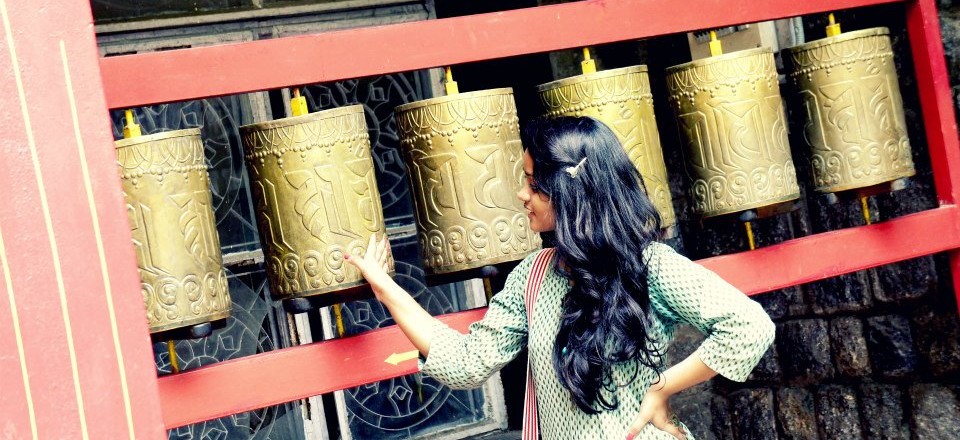
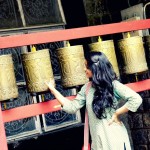
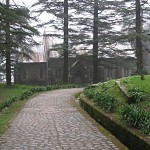
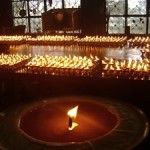
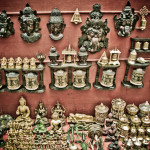
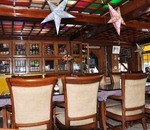
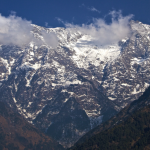
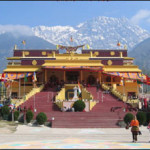
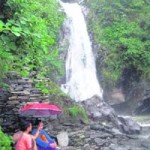
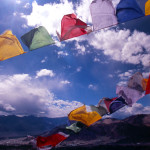
wow..
nice..
u made me interested to explore the place..
We’re glad to hear that Nilesh. Happy Wanderings!
A vivid Description..:) Feel Like Visiting Soooon !!!
Happy Travels!
Hmmm from how you describe it say I should be packing my bags asap and heading over there. Seems like a fantastic location for a holiday
Happy Holidays if you’re heading there!
This article actually made me revisiting the place and cherishing some beautiful moments spent there. Apart from the monastery, Tibetan food, roof-top cafés, road-side shops, narrow lanes and popular spots, I believe the place has a ‘cause’ too, which makes us feel for Tibet and its people. A silent procession with candles demanding free Tibet, a museum archiving documents of Tibet’s freedom struggle and a movie show on their fight against oppression made me feel for Tibet for the first time in my life. Borrowing words from the article, thus, I must say “as I placed my lit candle alongside the other candles, the small flame illuminated something in my heart”.
Yes, it’s a microcosm of Tibet in India, and one that adds to the rich heritage of this place. We’re happy to hear our sentiment echoed in your thoughts!
amazing place. true to the description 🙂
yes. 🙂
Chandrima, loved your post. Your description of the place seemed as real as one’s experience of it. Having read this, I ache with the desire to visit Mcleodganj again. And of course, as one commenter notes above, Mcleodganj is more than a tourist’s dream — it is the name of a struggle for political rights. Every renewed visit is but a salute to that spirit of resistance.
Thank you!
Nice description!
Hv to go to dis place! 🙂